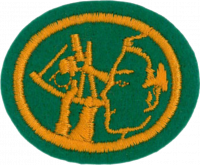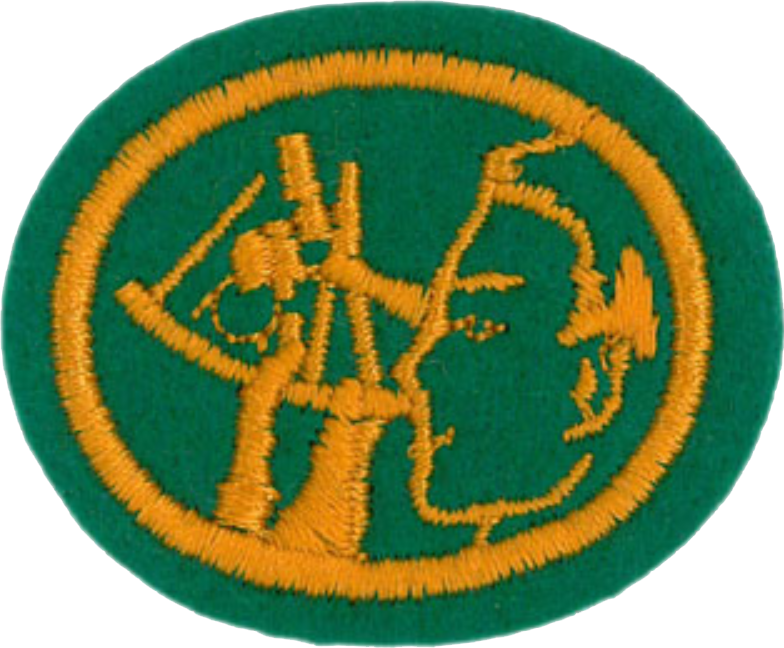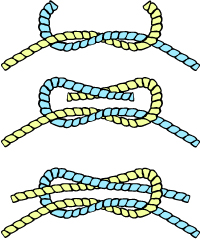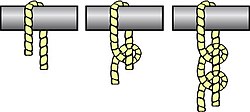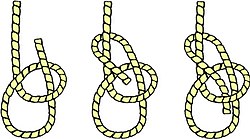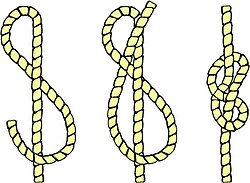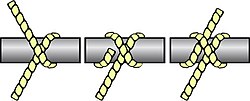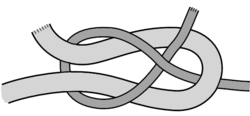Difference between revisions of "AY Honors/Navigation/Answer Key/es"
From Pathfinder Wiki
< AY Honors | NavigationAY Honors/Navigation/Answer Key/es
(Created page with "Especialidades JA/Navegación/Respuestas") |
(Updating to match new version of source page) |
||
| (39 intermediate revisions by 2 users not shown) | |||
| Line 1: | Line 1: | ||
| − | + | {{HonorSubpage}} | |
| − | |||
| − | {{ | ||
| − | |||
| − | |||
| − | |||
| − | |||
| − | |||
| − | |||
| − | |||
| − | }} | ||
<!--{{Honor_Master|honor=Navigation|master=Aquatic}}--> | <!--{{Honor_Master|honor=Navigation|master=Aquatic}}--> | ||
| − | |||
| − | |||
<section begin="Body" /> | <section begin="Body" /> | ||
{{ansreq|page={{#titleparts:{{PAGENAME}}|2|1}}|num=1}} | {{ansreq|page={{#titleparts:{{PAGENAME}}|2|1}}|num=1}} | ||
<noinclude></noinclude> | <noinclude></noinclude> | ||
| − | <!-- 1. | + | <!-- 1. Tener la especialidad de Climatología. --> |
| − | {{honor_prerequisite| | + | {{honor_prerequisite|honor=Weather|displayname=Climatología}} |
<noinclude></noinclude> | <noinclude></noinclude> | ||
| Line 23: | Line 11: | ||
{{ansreq|page={{#titleparts:{{PAGENAME}}|2|1}}|num=2}} | {{ansreq|page={{#titleparts:{{PAGENAME}}|2|1}}|num=2}} | ||
<noinclude></noinclude> | <noinclude></noinclude> | ||
| − | <!-- 2. | + | <!-- 2. Conocer al menos 20 términos náuticos utilizados en la navegación. --> |
| − | |||
| − | |||
| − | |||
| − | |||
| − | |||
| − | |||
| − | |||
| − | |||
| − | |||
| − | |||
| − | |||
| − | |||
| − | |||
| − | |||
| − | |||
| − | |||
| − | |||
| − | |||
| − | |||
| − | |||
| − | |||
| − | |||
| − | |||
| − | |||
| − | |||
| − | |||
| − | |||
| − | |||
| − | |||
| − | |||
| − | |||
| − | |||
| − | |||
| − | |||
<noinclude></noinclude> | <noinclude></noinclude> | ||
| Line 63: | Line 17: | ||
{{ansreq|page={{#titleparts:{{PAGENAME}}|2|1}}|num=3}} | {{ansreq|page={{#titleparts:{{PAGENAME}}|2|1}}|num=3}} | ||
<noinclude></noinclude> | <noinclude></noinclude> | ||
| − | <!-- 3. | + | <!-- 3. Nombrar al menos tres ayudas a la navegación y sus funciones. ¿Por quiénes son mantenidas? --> |
| − | + | {{clear}} | |
| − | + | {{clear}} | |
| − | |||
| − | |||
| − | |||
<noinclude></noinclude> | <noinclude></noinclude> | ||
| Line 76: | Line 27: | ||
{{ansreq|page={{#titleparts:{{PAGENAME}}|2|1}}|num=4}} | {{ansreq|page={{#titleparts:{{PAGENAME}}|2|1}}|num=4}} | ||
<noinclude></noinclude> | <noinclude></noinclude> | ||
| − | <!-- 4. | + | <!-- 4. Nombrar sies clases de boyas. ¿Qué significan y cómo se utilizan? Dar los colores de las seis que nombró. ¿Cómo están las boyas numeradas? ¿Cómo marcan los canales? --> |
| − | |||
| − | |||
| − | |||
| − | |||
| − | + | {{clear}} | |
| − | |||
| − | |||
| − | |||
<noinclude></noinclude> | <noinclude></noinclude> | ||
| Line 91: | Line 35: | ||
{{ansreq|page={{#titleparts:{{PAGENAME}}|2|1}}|num=5}} | {{ansreq|page={{#titleparts:{{PAGENAME}}|2|1}}|num=5}} | ||
<noinclude></noinclude> | <noinclude></noinclude> | ||
| − | <!-- 5. | + | <!-- 5. Poner en un estuche una brújula con los ocho puntos cardinales. ¿Por qué es tan importante en la navegación? ¿Dónde está montada en el barco y por qué? --> |
| − | |||
| − | |||
| − | |||
| − | |||
| − | |||
| − | |||
| − | |||
| − | |||
| − | |||
| − | |||
| − | |||
| − | |||
<noinclude></noinclude> | <noinclude></noinclude> | ||
| Line 109: | Line 41: | ||
{{ansreq|page={{#titleparts:{{PAGENAME}}|2|1}}|num=6}} | {{ansreq|page={{#titleparts:{{PAGENAME}}|2|1}}|num=6}} | ||
<noinclude></noinclude> | <noinclude></noinclude> | ||
| − | <!-- 6. | + | <!-- 6. Nombrar cuatro de los nudos más útiles en la marinería. Conocer la manera de realizarlos y dar sus principales usos. --> |
| − | |||
| − | {{ | + | {{:AY Honors/Knot/Square/es}} |
| − | {{: | + | {{:AY Honors/Knot/Two half hitches/es}} |
| − | {{: | + | {{:AY Honors/Knot/Bowline/es}} |
| − | {{: | + | {{:AY Honors/Knot/Figure 8/es}} |
| − | {{: | + | {{:AY Honors/Knot/Mooring Hitch/es}} |
| − | {{ | + | {{:AY Honors/Knot/Clove hitch/es}} |
| − | {{: | + | {{:AY Honors/Knot/Sheetbend/es}} |
<noinclude></noinclude> | <noinclude></noinclude> | ||
| Line 130: | Line 61: | ||
{{ansreq|page={{#titleparts:{{PAGENAME}}|2|1}}|num=7}} | {{ansreq|page={{#titleparts:{{PAGENAME}}|2|1}}|num=7}} | ||
<noinclude></noinclude> | <noinclude></noinclude> | ||
| − | <!-- 7. | + | <!-- 7. Familiarizarse con la lectura y la interpretación de una «carta náutica». ¿Por qué es una carta náutica tan importante en aguas desconocidas? Decir algunos de los elementos que se muestran en una carta náutica. Mostrar los símbolos utilizados en una tabla, o dos de las boyas más utilizadas. --> |
<noinclude></noinclude> | <noinclude></noinclude> | ||
{{CloseReq}} <!-- 7 --> | {{CloseReq}} <!-- 7 --> | ||
{{ansreq|page={{#titleparts:{{PAGENAME}}|2|1}}|num=8}} | {{ansreq|page={{#titleparts:{{PAGENAME}}|2|1}}|num=8}} | ||
<noinclude></noinclude> | <noinclude></noinclude> | ||
| − | <!-- 8. | + | <!-- 8. Cuando se está tomando una parte activa en la navegación, ¿cuáles son tres de las mejores normas de seguridad a seguir? --> |
| − | |||
| − | |||
| − | |||
<noinclude></noinclude> | <noinclude></noinclude> | ||
| Line 144: | Line 72: | ||
{{ansreq|page={{#titleparts:{{PAGENAME}}|2|1}}|num=9}} | {{ansreq|page={{#titleparts:{{PAGENAME}}|2|1}}|num=9}} | ||
<noinclude></noinclude> | <noinclude></noinclude> | ||
| − | <!-- | + | <!-- ¿Qué significa estar debidamente equipados? Ilustrarlo. --> |
| − | |||
| − | + | {{clear}} | |
| − | |||
| − | + | {{clear}} | |
| − | + | {{clear}} | |
| − | + | {{clear}} | |
| − | + | {{clear}} | |
| − | + | {{clear}} | |
<noinclude></noinclude> | <noinclude></noinclude> | ||
| Line 164: | Line 90: | ||
{{ansreq|page={{#titleparts:{{PAGENAME}}|2|1}}|num=10}} | {{ansreq|page={{#titleparts:{{PAGENAME}}|2|1}}|num=10}} | ||
<noinclude></noinclude> | <noinclude></noinclude> | ||
| − | <!-- 10. | + | <!-- 10. ¿Qué se entiende por «reglas de la carretera» y por «los protocolos adecuados en el agua»? --> |
| − | |||
| − | {{: | + | {{:AY Honors/Sailing/Rules of the road/es}} |
<noinclude></noinclude> | <noinclude></noinclude> | ||
{{CloseReq}} <!-- 10 --> | {{CloseReq}} <!-- 10 --> | ||
<noinclude></noinclude> | <noinclude></noinclude> | ||
| − | == | + | ==Referencias== |
<noinclude></noinclude> | <noinclude></noinclude> | ||
| − | + | {{CloseHonorPage}} | |
| − | |||
Latest revision as of 16:16, 14 July 2022
1
Tener la especialidad de Climatología.
Para consejos e instrucciones, véase Climatología.
2
Conocer al menos 20 términos náuticos utilizados en la navegación.
3
Nombrar al menos tres ayudas a la navegación y sus funciones. ¿Por quiénes son mantenidas?
4
Nombrar sies clases de boyas. ¿Qué significan y cómo se utilizan? Dar los colores de las seis que nombró. ¿Cómo están las boyas numeradas? ¿Cómo marcan los canales?
5
Poner en un estuche una brújula con los ocho puntos cardinales. ¿Por qué es tan importante en la navegación? ¿Dónde está montada en el barco y por qué?
6
Nombrar cuatro de los nudos más útiles en la marinería. Conocer la manera de realizarlos y dar sus principales usos.
| Nudo llano |
|---|
|
Uso: También conocido como el nudo rizo o cuadrado, el nudo llano se aprende fácilmente y es útil para varias situaciones. Es usualmente utilizado para atar dos cuerdas o sogas juntas en sus extremos. Este nudo se utiliza en el mar en rizos y enrollar velas. Se utiliza en primeros auxilios para atar una venda o un cabestrillo debido a que el nudo queda plano.
Cómo amarrar:
ADVERTENCIA: No confíe en este nudo para soportar el peso en una situación de vida o muerte. Se ha conocido a desamarrarse.
|
| Dos medio cotes |
|---|
|
Uso: Este nudo fiable está se amarra rápidamente y es el enganche más utilizado en los amarres.
Cómo amarrar:
|
| As de guía |
|---|
|
Uso: Este nudo no se resbala o desata cuando se amarra correctamente. Puede ser amarrado alrededor de la cintura de una persona y se utiliza para levantarla, ya que el seno no se aprieta bajo una carga. En navegación por vela, el as de guía se utiliza para atar una driza a un punto de la vela.
Cómo amarrar:
|
| Figura de Ocho |
|---|
|
Uso: Este nudo es ideal para mantener el extremo de una cuerda y que no se quite de una polea.
Cómo amarrar:
|
AY Honors/Knot/Mooring Hitch/es
| Ballestrinque |
|---|
|
Uso: Este nudo es la vuelta o el empalme de «utilidad general» para cuando se necesita un método rápido y sencillo de sujetar una cuerda alrededor de un poste, mástil o estaca (como atar mechas a palos en la especialidad de Arte de hacer velas) u otra cuerda (como en la especialidad de Macramé).
Cómo amarrar:
|
| Vuelta de escota |
|---|
|
Uso: La vuelta de escota (o nudo tejedor) es excelente para unir dos cuerdas juntas, especialmente si las dos cuerdas no son del mismo tamaño. Cuando atado correctamente, no se deshace, y es fácil de desatar. Es muy similar al nudo bolina.
Cómo amarrar:
|
7
Familiarizarse con la lectura y la interpretación de una «carta náutica». ¿Por qué es una carta náutica tan importante en aguas desconocidas? Decir algunos de los elementos que se muestran en una carta náutica. Mostrar los símbolos utilizados en una tabla, o dos de las boyas más utilizadas.
8
Cuando se está tomando una parte activa en la navegación, ¿cuáles son tres de las mejores normas de seguridad a seguir?
9
¿Qué significa estar debidamente equipados? Ilustrarlo.
10
¿Qué se entiende por «reglas de la carretera» y por «los protocolos adecuados en el agua»?
